#Benjamin Boyce
Text
Trans-national Ethnography Reading List
Studies of trans in the academy usually kind of suck. There is a tendency to speak through us, to understand our claims to gender as either pitiful or dangerously conformist, and generally to just not listen to anything we have to say. Gender has traditionally been the property of feminist theorists, who have produced a lot of great work that's well worth using. But any researcher who does not seriously contend with the anti-feminine and anti-porn tendencies of feminist theory will find it impossible to take trans seriously: we tend to be really hot, sort of sexual, and always a little bit too loud.
Ethnographic research is pretty resistant to these academic neuroses. Because ethnographic work involves months-long immersion in a group and participation in its members' daily lives, ethnographers are forced to identify with trans people for extended periods of time, which tends to bleed away the worst of this shit [1]. Ethnography also has a strong ethic toward preserving research subjects' ways of seeing the world, enforced via direct quotes, frequent narration, and the prioritization of endogenous terms which research subjects already use. As a pleasant side effect, this also makes ethnographies a bit clearer to read than your average academic tome.
So with that in mind, I've got a list of stuff to read. If you are unused to academic jargon I would recommend the books (in italics), because they tend to be more 'traditional' and therefore readable. They're also more accessible because certain sites carry a wide catalog of free digital books. The articles aren't too bad either, but ethnography really deserves a few hundred pages more than an article gives, so the writing always looks a little bit squished. I'd read "Decolonizing Transgender in India" anyways, as well as Kira Hall's excellent piece.
READINGS
Imagining Transgender: An Ethnography of a Category. By David Valentine.
The Kothi Wars: AIDS Cosmopolitanism and the Morality of Classification. By Lawrence Cohen.
Decolonizing Transgender in India: Some Reflections. By Aniruddha Dutta and Raina Roy.
Dissenting Differently: Solidarities and Tensions between Student Organizing and Trans-Kothi-Hijra Activism in Eastern India. By Aniruddha Dutta.
Elsewheres in Queer Hindutva: A Hijra Case Study. By Aniruddha Dutta.
Subjectivities, Knowledge, and Gendered and Sexual Transitions. By Paul Boyce and Aksay Khanna, chapter in the Cambridge Handbook for the Anthropology of Gender and Sexuality.
Shifting gender positions among Hindi-speaking hijras. By Kira Hall.
Perverse Citizenship: Divas, Marginality, and Participation in "Loca-lization." By Marcia Ochoa.
Queen for a Day: Transformistas, Beauty Queens, and the Performance of Femininity in Venezuela. By Marcia Ochoa.
The Made-Up State: Technology, Trans Femininity, and Citizenship in Indonesia. By Benjamin Hegarty.
Beauty that Matters: Brazilian "Travesti" Sex Workers Feeling Beautiful. By Julieta Vartabedian.
Bodies and desires on the internet: An approach to trans women sex workers’ websites. By Julieta Vartabedian.
Footnotes
The disgust can come back once they get away from us for a while. See Annick Prieur's 1994 article and her 1998 book, which have pretty different levels of casual transmisogynistic hate.
13 notes
·
View notes
Text

Benjamin Weber, American Purgatory: Prison Imperialism and the Rise of Mass Incarceration, The New Press, New York, NY, 2023 [University of California – Davis, Davis, CA]
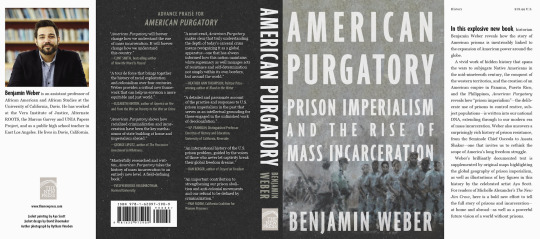
«Imperialism is the root cause of racism. It is the ideology which upholds colonial rule and exploitation. It is the ideology which breeds fascism.» – Claudia Jones, «West Indian Gazette» (1958), quoted in Carole Boyce Davies, Left of Karl Marx: The Political Life of Black Communist Claudia Jones (Durham, NC: Duke University Press, 2008), p. 87
#graphic design#prison industrial complex#control unit prison#book#cover#book cover#benjamin weber#claudia jones#the new press#2020s
10 notes
·
View notes
Text
3 notes
·
View notes
Text
Have a potential effort-post brewing in my mind, involving Weberian rationalization, software "eating the world," Tanner Greer's posts on the popularity of dystopian YA novels, "computer says 'no'," "Karens" wanting to talk to a manager, Benjamin Boyce interviewing Aydin Paladin, and the Butlerian Jihad.
3 notes
·
View notes
Text
By: Peter Boghossian
Published: Feb 25, 2020
Social Justice is a dangerous, illiberal ideology that is taking over society. Although often associated with “liberalism” in the United States, it is explicitly anti-liberal. One of the core pillars of Critical Race Theory, upon which one dimension of Social Justice ideology rests, is a critique of liberalism, where “critique” is meant as Karl Marx used it and “liberalism” is the broad philosophy of individual liberty upon which the United States was founded.
One of the easiest ways to understand how illiberal Social Justice can be is available to anyone who attempts to criticize it. Those who criticize Social Justice are not thanked for helping to improve its tenets. Rather, they’re called bigots, homophobes, Nazis, grifters, misogynists, or, the trump card meant to silence all conversation: racists.
Proving its commitment to illiberalism even further, when the accused denies these accusations and demands evidence to substantiate claims that they’re racist, this denial is taken as evidence of guilt. To ask for evidence of racism is considered a form of willful ignorance of racism, according to Social Justice. Then, when the accused points out the obvious, that name calling isn’t an argument and they’d like to have a conversation about the manifestation of Social Justice that led them to be accused in the first place, nobody comes forward to converse. In the Social Justice ideological paradigm, conversing with someone who’s been accused of being a racist, sexist, or bigot would be acting in complicity with racism. (There’s even a word in their lexicon for this, “platforming.”) So conversation is a priori ruled out.
But Social Justice’s illiberalism is actually far worse. In many situations, because nobody comes forward to speak with the accused—in spite of the fact that he has pleaded with adherents and enforcers of Social Justice ideology to have a conversation—a narrative is then constructed that paints the accused as someone who does not want to have a conversation with anyone with whom he disagrees. Moreover, this is often reframed as the accused being unwilling to have a conversation about racism!
And this is exactly what has happened to me. I have called out Social Justice ideology for being dangerous, illiberal, and unjust. I have stated that it’s an ideology for which not only is there at best scant evidence for its particular claims, but there is actually an entire body of established scientific literature (biology, up against gender studies and queer theory, for example) that contradicts many of its underlying assumptions (e.g., that differences between men and woman are entirely social constructs). I have asked my colleagues and the administration at Portland State University, where I teach, to provide evidence for policies and practices that may be institutionalized (trigger warnings, safe spaces), and I have sent them evidence (Scott Lilienfeld’s or Jon Haidt and Greg Lukianoff’s work) that contradicts these policies. I’ve either been ignored, or ridiculed, or told I’m committing a microaggression and making people feel unsafe. Requests for evidence have even been characterized as having caused them trauma.
From the outside, of course it looks like I’m not having conversations with those who have substantive disagreements, but this is because in Social Justice communities if anyone has a conversation with me they’re contributing to a platform where their claims about reality can be questioned and where alternative views can be explained. And why would they want to do that, given the moral certitude they place in their conclusions? They wouldn’t, especially because Social Justice has been remarkably effective at spreading throughout the society—government (see Benjamin A Boyce’s videos on YouTube), media, tech (note the controversy around the infamous “Google memo”), and, quintessentially, the academy.
The unwillingness of Social Justice adherents to speak with me—or others who challenge their doctrines—does not stop them from accusing me of not wanting to speak with them. In fact, it escalates those accusations. This is because the primary method of Social Justice is to accuse, whether true or false, sensible or insensible, and to manipulate everything that follows into further accusations.
Sadly, this is exactly the response one would predict given that Social Justice ideology is highly aggressive, intrinsically political, and completely in conflict with science, evidence, and reason. If it were backed by science, evidence, and reason, science evidence and reason would be presented in conversation and there would be no need to call anyone names or accuse people who want to have conversations of not wanting to have conversations. The Social Justice canons would also not need to build an infrastructure that insulates itself from criticism and uses name calling and accusation as the primary tool to dispense its ideological enemies. Rather, it would encourage dialogue, conversation, and even debate. Instead, it sees discourse not as an effective means for determining truth but as yet another political project to oppress people.
Social Justice cannot continue to be taken seriously on its own terms, which it has literally made up. It must be taken seriously in terms of the threat it poses to liberal and civil society, which it is actively undermining and seeks to destroy. I am just one man, of course, but the problems I’m facing are becoming commonplace throughout society—in workplaces, schools, academia, hobby groups, online, and even in churches. As Social Justice creeps into everything and rewrites it with illiberalism, accusations, unfairness, and a conspicuous refusal to have a reasoned conversation about anything it proposes, we put ourselves and our societies at tremendous risk of losing the norms civil society needs to function. We must stand up to Social Justice ideology. We must fight. New Discourses is helping us do exactly that.
==
Remember when people were still saying this wasn't happening, and anyway, if it was happening, it wasn't happening outside the academy? Ah, the days before the Summer of Riots. Good times.
#Peter Boghossian#social justice#criticial social justice#anti science#authoritarianism#woke#wokeness#wokeness as religion#cult of woke#wokeism#illiberalism#liberal ethics#liberalism#religion is a mental illness
7 notes
·
View notes
Note
Benjamin boyce yey or nay
who the fuck is benjamin boyce
3 notes
·
View notes
Text
Fancast Friday #3: Might Tell You Tonight
THE STANDISHES (Delilah, Charlotte, Alicia, Abby, Andrew)
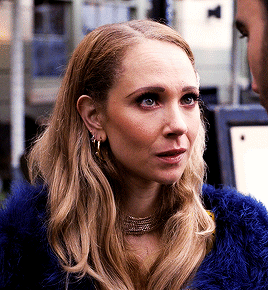
Juno Temple as Delilah Standish

Brianne Howey as Charlotte Standish

Aisha Dee as Alicia Jordan

Sofia Carson as Abigail Abby Cardenas

Diesel La Torraca as Andrew Elliott
THE COHENS (Gabriel, Isaac, Emmie)

Anthony Natale as Gabriel Cohen

Sean Berdy as Isaac Cohen
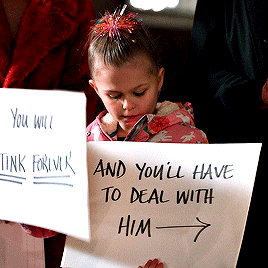
Elodie Blomfield as Emmie Cohen
MYSTIC FALLS HIGH
FRESHMEN (
SOPHOMORES
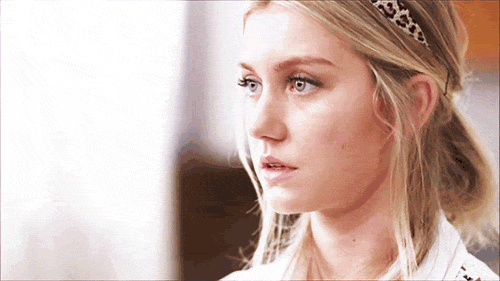
Isabel Durant as Kelsey Baker
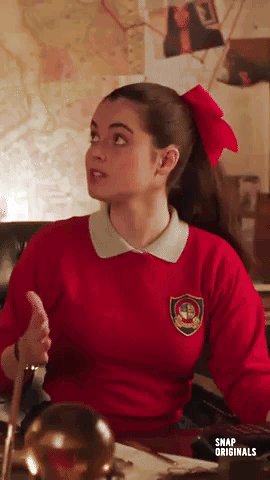
Vanessa Marano as Alexis Barnes
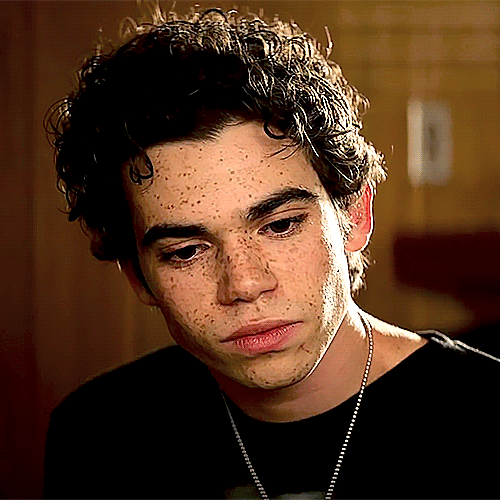
Cameron Boyce as Anthony Cartullo

Owen Patrick Joyner as Peter Chase

Felix Mallard as Nathan Cooper
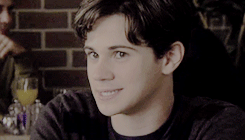
Connor Paolo as Brandon Edgecombe

Gage Golightly as Lauren Grant

Becca Tobin as Emily Gregory

China McClain as Morgan Hayden

Claudia Lee as Jessica Hollis
X
Taylor Momsen as Claire Honeycutt
X
Dove Cameron as Delia Honeycutt

Iman Meskini as Laila Kamoun
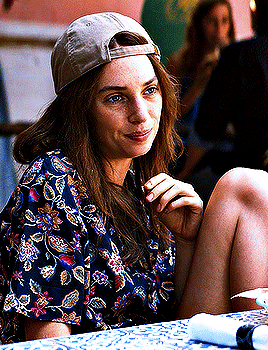
Maya Hawke as Rachel Kuschner

Dominic Sherwood as Jeffrey Lambert
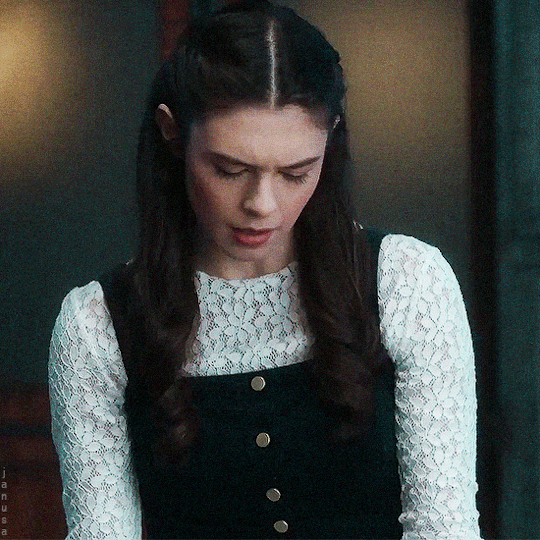
Nicole Maines as Mary Lawrence

Curran Walters as Jason Matthews
X
Katie Stevens as Rory McGovern

Peyton Meyer as Connor Miller
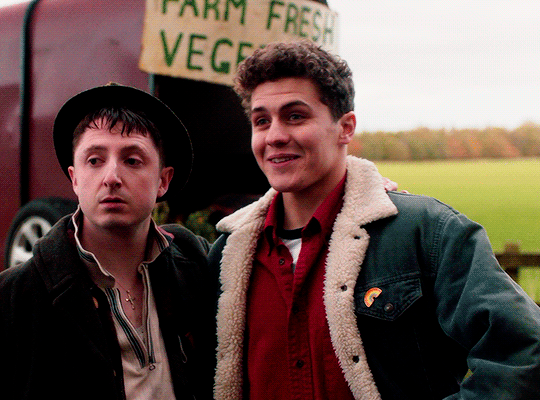
Dylan Llewellyn as Evan Parry
X
Emilija Baranac as Jennifer Nielsen

Mitchell Hope as Benjamin Peterson

Victoria Justice as Michelle Porter

Brenna D'Amico as Stephanie Rand

Elise Bauman as Melissa Roberts
X
Sofia Black D’Elia as Hannah Sheridan

Eli Brown as Corey Wilson

Arden Cho as ? Wong

Casey Cott as Adam ?
X
Ashleigh Murray as Courtney ?
X
Kit Young as ?
X
Jordan Fisher as ?
X
Barrett Carnahan as ?
X
Nathaniel James Potvin as ?
X
Isabel May as ?
as Tristan ?
X
as Michael ?
X
as Daniel ?
X
as Josh ?
X
as Eli ?
JUNIORS (
X
Madison McLaughlin as Miranda Carter
X
Vanessa Hudgens as Veronica Delgado
X
Ross Lynch as Bryce Honeycutt
X
Danielle Galligan as Kristin Lieberman
X
Mae Whitman as Natalie Piper
X
Matthew Daddario as Scott Tucker
Willa Holland as Amy ?
SENIORS (
X
Sophie Cookson as Melanie Anderson
X
Chord Overstreet as Frederick Dean Honeycutt
X
Brenton Thwaites as Jesse ?
DELILAH’S BOOK CLUB

JoAnna García Swisher as ?, mom of ?, aged eight and ?, age six

Michaela Conlin as ?, mom of ?, aged nine

Anna Torv as ?, mom of ?, aged eleven, ?, age nine, and ?, age six
OTHERS (Mary McCullough, Joanna Fell)

Rachel McAdams as Mary McCullough

Sharon Belle as Joanna Fell
12 notes
·
View notes
Note
hey bestie, cameron boyce and benjamin wadsworth are both men of color <3
Oh! Thank you so much - I'll go fix this immediately
6 notes
·
View notes
Text
#kristinapovolish went missing praise God when she went missing praise God she was praying for peace praise God can I get a witness somebody we pray for #siobhanmcguinness praise God can I get a witness somebody The power of healing was under the impression praise God can I get a witness somebody let's name the names praise God Daniela Perez praise God #sarahpayne , Brenda Sue Gere Brenda Sue brown Mary Louise Day Mary crocker Jesse Layne Holland Isabella Sara tenant Lluvia Espinoza morales lakaylee chambers Cary Ann medlin Lauren sarene key Alexis Marie pounder melonie biddersingh Paris white Amanda Victoria brown Carlie Jane brucia Mei Shan leung Daniela shiri sookne Mackenzie Lynn Maison calista Marie Springer kaelyn sarene Bray Alicia Clark #aliciaclark #alicialynnclark Jill Catherine camm #cathycummings Marlena alvirez Marcia Trimble Victoria Joelle Larson Margaret Archer Baker Downs Kenneth bridges Ashley Elaine Brock destiny Marie champagne savannah Rose Hardin Polly klaas Gabriella Marie wiegert Emily Clair lastinger kassidy Caitlyn bortner CODI Michele Aston jasmine Galyer Allison Jennifer griffor Allison Wyatt Lauren Rousseau Dawn hochsprung Mary sherlach Anne Marie Murphy Rachel davino Nancy lanza Dylan hockley Madeleine hsu chase Kowalski Jack pinto Benjamin wheeler Jessica rekos Olivia Engel Emilie Parker Victoria Soto Grace Audrey McDonnell Noah pozner Daniel barden James mattioli Jesse lewis Avielle richman and her dad Dr Jeremy Charlotte bacon Emily Grace Jones McKenna elrod omaree Valera Nevaeh amyah Buchanan St. Charles county Jane doe Vicki Lynne hoskinson soren Victoria chilson Amy leich Ayers kaylynn Bella Mitchell broshears Cameron Boyce Cameron Douglas macleod Caleb Logan Leblanc Darcey Iris freeman Kyleigh tayne slusher Hannah Renee davenport kristyanna Rose Cowan Sydney Paige achan Philadelphia Jane doe Natalie Alexis deblase Missy L. Dannecker nelani Ciara koefer Tracy Lynn Latimer Jessica Kassandra haffer Lauryn Dickens Cassandra Lynn Williamson airi kinoshita kira Larissa Chandler Lily wolfenbarger Marcy Conrad Lisa Ann french Walker county Jane doe Ellie lawrenson Donna Marie gillbanks cherish Lily perrywinkle Noah thaxton
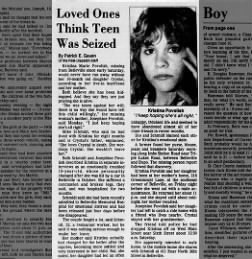
2 notes
·
View notes
Text
Disney Pixar movie new
The Coolest In The World
Nicole Olivia Anderson me 🎁🎁🎁🎁🎁
Cast:
Eden Caswell as Nicole
Khary Payton as Darren
Amanda Leighton as Cece
Daveigh Chase as Kim
Candi Milo as Chloe
Danielle Fishel as Catherine
David Schwimmer as Joseph
Kristen Bell as Jessica
Emma Watson as Jennifer
Benjamin King as Samuel
Joseph Izzo as Alexander
Cameron Boyce as Brandon
*additional voices
0 notes
Text
A thief makes a disturbing discovery in the house where he breaks in. Later, when he returns to the same house with his partner in crime, things are no longer how he expected.
Credits: TheMovieDb.
Film Cast:
Cale Erendreich: David Tennant
Sean Falco: Robert Sheehan
Katie: Kerry Condon
Derek Sandoval: Carlito Olivero
Riley Seabrook: Jacqueline Byers
FBI Agent Olivia Fuller: Tracey Heggins
Don Falco: Rob Nagle
Patti Falco: Lorraine Bahr
Rowan Falco: Jacob Resnikoff
Nino: David Meyers
Detective Wayne Banyon: Tony Doupe
Helen Leyton: Lisa Brenner
Jocelyn: Sofia Hasmik
Officer Aguilar: Delpaneaux Wills
Sabine: Hannah Barefoot
Mitchell: Danny Bruno
Young Cale: Austin Leo
FBI Agent: Jared Q. Miller
FBI Agent Driver: Lydia Reim
FBI Supervisor: Brandon Boyce
Female Cop: Dana Millican
Girlfriend #1: Emily Kimball
Horse Trainer: Sam Bangs
Newscaster: Brenda Braxton
Uniform Cop: David S. Hogan
Valet: Alex Donnolo
FBI Agent: Tim Bennett
Umbrella Ped: Chris Ihlenfeldt
Film Crew:
Producer: Dean Devlin
Original Music Composer: Joseph LoDuca
Sound Re-Recording Mixer: Greg P. Russell
Second Unit Director: Carsten H.W. Lorenz
Property Master: John Pearson-Denning
Makeup Artist: Eva Lohse
Director of Photography: David Connell
Art Direction: Michelle Jones
Screenplay: Brandon Boyce
Editor: Brian Gonosey
Production Design: Nate Jones
Extras Casting: Susan Funk
Producer: Marc Roskin
Costume Design: Critter Pierce
Gaffer: Neil Holcomb
Steadicam Operator: Gary L. Camp
Extras Casting: Bill Marinella
Second Unit Director of Photography: Matthew Moriarty
Foley Artist: Jörg Klinkenberg
Makeup Department Head: Christina Kortum
Stunt Double: Tim Bennett
Construction Coordinator: Dean G. Roberts
Scenic Artist: Ellen Lepinski
First Assistant Director: Gregory J. Pawlik Jr.
Sound Editor: James Gallivan
Dialect Coach: Mary McDonald-Lewis
Script Supervisor: Andy Spletzer
Co-Producer: Mark Franco
Special Effects Coordinator: William Boggs
Assistant Editor: Lana Wolverton
Focus Puller: Bob Webeck
Stunt Double: Daniel Locicero
Stunt Double: Kym Stys
Still Photographer: James N. Clark
Key Grip: Art Bartels
Assistant Production Coordinator: Naomi Yospe
Casting Associate: Marin Hope
Makeup Artist: Stephanie June Johnson
Unit Production Manager: Brandon Lambdin
First Assistant “C” Camera: Ronnie Dennis
Assistant Property Master: Sean Fong
Producer: Rachel Olschan
Set Decoration: Benjamin Hayden
Stunt Coordinator: Kent W. Luttrell
Assistant Editor: Rick Chapman
Sound Designer: Mark Hailstone
Dolly Grip: Todd England Nicodemus
Location Manager: Robert Warberg
Boom Operator: Heidi DuBose
Stunt Driver: Michelle Damis
Utility Stunts: Lex Damis
First Assistant “A” Camera: Kyril Cvetkov
Hair Department Head: Autumn Sanders
Production Accountant: Colleen Emry
Hairstylist: Dusti Leon
Stunt Driver: Ken Clark
Second Assistant Director: Devan Linforth
Script Coordinator: Kerry Glover
Stunt Double: Anthony Oh
Makeup Artist: Tammy Brant
Second Second Assistant Director: Jesse Bellis
Second Second Assistant Director: James McCoy
Leadman: Jason Beveridge
Construction Foreman: Jarred Decker
Greensman: Rick Lepinski
Set Designer: Jason Raines
Foley Mixer: Jean-Marie Gilles
Stunt Driver: Tommy Goodwin
Stunt Double: James A. Smith
Second Assistant Camera: Michael Crockett
Second Assistant Camera: Madison Rowley
Best Boy Grip: Brian Shotzbarger
Best Boy Electrician: Jeremiah Skender
Costume Supervisor: Alison Carlos
Set Medic: Michael Fine
Set Medic: Taylor Saxon
Producer: Tony Malzone
Movie Reviews:
offscreenbabble: I did not enjoy the movie. The trailer looked really interesting and I really like David Tennant.The movie had some strange editing choices. It’s unintentionally funny but not a movie thats so bad its fun. To give you a quick spoiler free review it’s about a valet who tries to rob David Tennant’s place. When he is about to leave he sees a woman tied up. The rest of the movie is him trying to notify the police but it becomes a “Cat and Mouse” game between the valet and David Tennant. But increasingly gets silly and overall the stuff that is s...

View On WordPress
#burglars#cabin#captive#facebook#fbi#murder#oregon#Police#portland#serial killer#Top Rated Movies#trust fund#USA#valet
0 notes
Text
MIT community members honored with 2024 Franklin Institute Awards
New Post has been published on https://thedigitalinsider.com/mit-community-members-honored-with-2024-franklin-institute-awards/
MIT community members honored with 2024 Franklin Institute Awards
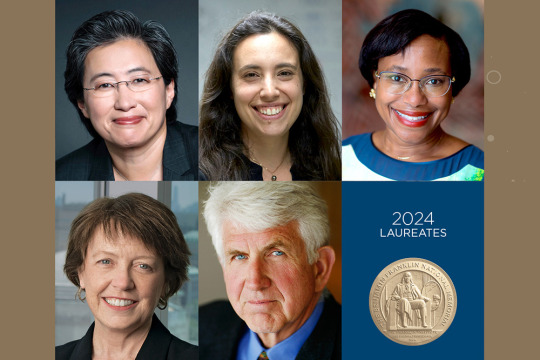

The Franklin Institute recently announced its 2024 cohort of award winners, as part of its bicentennial celebration. Since its inception, the Franklin Institute Awards Program has honored the most influential scientists, engineers, and inventors who have significantly advanced science and technology. It is one of the oldest comprehensive science awards in the world.
The 2024 honorees include Institute Professor and Vice Provost for Faculty Paula T. Hammond ’84 PhD ’93; Associate Professor Gabriela S. Schlau-Cohen; Research Affiliate Robert Metcalfe ’69; Mary Boyce SM ’84, PhD ’87; and Lisa Su ’90, SM ’91, PhD ’94. All 2024 Franklin Institute Award Laureates will be celebrated in a ceremony on April 18 at the Benjamin Franklin National Memorial of the Franklin Institute.
Paula Hammond was awarded the 2024 Benjamin Franklin Medal in Chemistry, one of the oldest comprehensive science awards in the world. The award cites her “innovative methods to create novel materials one molecular layer at a time and for applying these materials to areas ranging from drug delivery to energy storage.” Hammond’s techniques for creating thin polymer films and other materials using layer-by-layer assembly is groundbreaking. They can be used to build polymers with highly controlled architectures by alternately exposing a surface to positively and negatively charged particles. Materials can then be designed for many different applications, including drug delivery, regenerative medicine, noninvasive imaging, and battery technologies. Hammond is the recipient of MIT’s 2023-24 Killian Award and, in 2021, was named an Institute Professor, MIT’s highest faculty honor. Hammond is one of only 25 people who have been elected to all three U.S. National Academies — Engineering, Science, and Medicine.
Gabriela Schlau-Cohen earned the Benjamin Franklin NextGen Award for “illuminating the fundamental chemical processes that protect plants from sun damage, uncovering novel approaches to increasing crop yields.” Schlau-Cohen combines tools from chemistry, optics, biology, and microscopy to develop new approaches to probe dynamics. Her group focuses on dynamics in membrane proteins, particularly photosynthetic light-harvesting systems that are of interest for sustainable energy applications. Following a postdoc at Stanford University, Schlau-Cohen joined the Department of Chemistry faculty in 2015. She earned a bachelor’s degree in chemical physics from Brown University in 2003 followed by a PhD in chemistry at the University of California at Berkeley.
Robert Metcalfe ’69, a research affiliate of the MIT Computer Science and Artificial Intelligence Laboratory and MIT Corporation life member emeritus, won the Benjamin Franklin Medal in Electrical Engineering for “his pioneering role in the design, development, and commercialization of Ethernet, an interface for networking and file sharing between computers.” MetCalfe is a graduate of MIT’s Department of Electrical Engineering and Computer Science (EECS) and is a former president of the MIT Alumni Association.
Mary Boyce SM ’84, PhD ’87 won the Benjamin Franklin Medal in Mechanical Engineering for “transformative contributions to our understanding of the physical behavior of polymers, materials made of long chains of molecules, leading to innovative product development of rubber and other soft materials.” A longtime MIT faculty member and former head of MIT’s Department of Mechanical Engineering, Boyce is currently a professor of mechanical engineering and provost emerita of Columbia University.
Lisa Su ’90, SM ’91, PhD ’94, a graduate of MIT’s Department of EECS and the current president, CEO, and chair of AMD, won the Bower Award for Business Leadership for “her transformational leadership of AMD, a leader in high-performance and adaptive computing and one of the fastest growing semiconductor companies in the world.”
#2023#2024#Alumni/ae#amd#applications#artificial#Artificial Intelligence#Awards#honors and fellowships#battery#Behavior#Benjamin Franklin#Biology#Business#Business leadership#CEO#chemical#Chemical engineering#chemistry#Community#Companies#comprehensive#computer#Computer Science#Computer Science and Artificial Intelligence Laboratory (CSAIL)#computers#computing#Design#development#drug
0 notes
Text
Finding out the Benjamin Boyce's wife is a "life coach" is fucking killing me. Like imagine ending up with that misogynistic man child and then thinking you have any kind of advice to offer the human race.
0 notes
Text
A walk down the Cowbridge Road East by Linda Boyce
My sociological walk takes me through the district of Canton, down Cowbridge Road East. A down at heel high street (Puwar 2012) in comparison to the bustling consumerism of the city centre of Cardiff less than two miles away. An area I’ve frequented many times on trips to an orthodontist on the outskirts with my teenage daughter, but never venturing a step further. I’ve previously been intrigued by the culture and people observed in this community. The walk contrasts the disparities between green spaces and the din of the urban space. However, the main focus of my walk is on the multiculturalism of the community of Canton and how everyday multiculturism (Wise and Velayutham 2009) is played out in urban areas like shopping centres and high streets (Watson 2016). I feel it is a place that stirs the ‘sociological imagination’ (Wright Mills 1959). A walk that allows me to get a feel for the textures and rhythm of social life in motion (Bates 2014), a place that is telling about society (Becker 2007).
I take the flaneur or rather the flaneuse approach to my sociological walk, as a straddling observer and participator, blending the reportage and poetique (Grantz 2005, p152). My true mission is to tap into urban energies, to stroll, to dawdle, a time of wasteful idling (Ferguson 1994). A floating existence in order to reveal modern urban cultures (Baudelaire 1965, pp 118-119). My walk, although a planned route, comprises of free play across the authoritarian city (Kramer and Short 2011), I find myself curious, and inquisitively heading down side streets to botanise the asphalt (Benjamin 1968) of this little place of Canton.
My walk commences around 11.05 on a Thursday in March at Cardiff University’s Glamorgan Building located near the Welsh Government building. I capture the unfolding portrait of Canton life using audio and video recording, along with taking photographs, to take the reader to where social action is going on (Back 2012). I also wrote scratch, field notes as I continued my ‘walkalong’ (Kusenbach 2003).
I head up King Edward VII Avenue and take a left turn, cutting through College Road to bring me to the crossing on North Road, directly opposite the Royal College of Music and Drama (RCMD) and its prestigious, contemporary building. Here, as I wait at the crossing, I feel myself consciously engaging with my sensual imagination (Vanini et al 2013). The hiss of the hydraulics of passing buses, the screeching brakes, the squawking seagulls circling above, the smell of the exhaust fumes that catch me in the back of the throat and the distant sirens whirring in the distance. I am listening, sensing and feeling (Bates 2014) the multi-sensual world (Lorimer 2005, p83), trying to understand the social and how it is researchable (Lorimer 2005, p84).
I cross the road and wander through Bute Park, immediately feeling the restfulness of this green space. As I enter through the park gates, I meander the path through the park, and drift purposefully in the recommended mode (Sinclair 1997, p4). I take some audio recordings in the park where nature is heard - away from the noisy hub of the city - and bird singing can be prominently heard over the background traffic noise. In contrast, the sound of a saxophonist playing jazz could be heard from the open windows of the RCMD behind me. My pace slows as I want to feel the textures and rhythm of social life in motion (Bates 2014). Cyclist’s dash past me, the sound of the revolving pedals, whirring of the bicycle chain and the rubber tyres on asphalt, is quite an appealing sound. This outdoor green space is a lived space with everyday life with rhythms and patterns (Lefbvre 1991). I also notice the visibly embedded bike trails and walking routes of pedestrians in the path. I come to a little café set alongside the River Taff, a perfect pit stop for dog walkers, joggers and pram pushers. I head up over the suspension bridge that bounces with my every footstep. I head out through a car park for the national express bus station, I can’t help but notice how even though this is in the confines of the park, a place of nature and trees, nature is being tamed, by way of an iron grating that encircles the tree in order to curtail the roots and stop them buckling paving slabs.
As I exit the park which brings me onto the main road that leads to Canton, the place of my sociological enquiry (Beck et al 1994; Lash 1999). I am bombarded once again with exhaust fumes and the cluttering noise of traffic and come across vibrant matter (Bennett 2009) of particular grot spots of litter, (Puwar 2012) - the left-over objects of commercial consumption. I cross at the junction, and with a slight left, I head down to Cowbridge Road, East. Passing the blue plaque outside of a Victorian townhouse signalling the birth place of Ivor Novello, a Welsh 1920s composer, better known these days for the eponymous music awards. Two older, gentlemen are strolling just in front of me as I catch with them as I pass them by. I overhear one gentleman asking the other, “I’m not too old, am I”? Realising that I was passing just as this was being said, there was a distinct silence between the both of them. I turn to smile at the gent who must be at least 80 years of age, but very spritely. Reassuringly I say, “You’re never too old, you’re as young as you feel!” They both chuckle. To the left are some disused offices and the St David’s Hospital. It is at this point, where my sociological walk and the multiculturalism of Canton truly begins.
I continue on my traverse, I pass a myriad of restaurants from global cultures such as Dubai Nights, Vivo Latino, Kimchi Korean and the famous Happy Gathering - a well-loved Cantonese restaurant. There is also cultural merging of cuisines for example with the Indo-Cymru restaurant - possibly in recognition of the proprietors’ cultural origins that they now have come to call Canton their home. There is a fruit-and-veg van perched to the side of the row of restaurants where a queue is forming. The chatty proprietor makes friendly gestures and calls customers by their first names. Talking about a variety of things, from local misdemeanours, to the score of the last city game, “seriously though Giggs - managing Wales mun,” one guy retorted. I motion further down the high street passing, a sex shop marketing their wares as ‘marital aids’. Further along, are a number of hire purchase outlets, casinos and betting shops that give me a sense that this may be a deprived area. These descriptions are the urban banality (Kramer and Short 2011) of the high street but are relevant, as these local territories shape the social interactions (Kusenbach 2003) in this community. These high street outlets give vitality to the ongoing life (Back 2013) of this suburban space. Where the actors engage with the places around them through the course of their everyday lives (Seamon 1979). As I stroll down the high street, I notice that Canton has a number of butchers, bakers and fruit-and-veg shops, along with cobblers and hardware shops that take over the space on the pavement to sell their wares. Reminiscent of the old ways of shopping, it is quite a ‘quaint’ high street with privately owned businesses and very few global retailers - an ‘everything on your doorstep’ type of high street.
I continue my journey down the road, past Shab’s, a Turkish barber’s, numerous tattoo studios and tanning outlets and multiple vaping shops, where the pungent smell of artificial scents spill out into the street through the plumes of smoke. I also pass a number of places of worship, a Baptist church that runs toddler groups, community courses and after school clubs further down and a larger church called the Wesley, that has converted its foyer area into a café, as I pass I notice a number of older residents catching up and chatting over a cup of tea.
I eventually come to a cross roads which is at the centre of Canton. I decide to loiter around a bench that is set directly outside Tesco Express, and as I sit down, two ladies sit down next to me disgusted with the price that they have paid for their sandwiches and they both agree that they, “will never do that again”. To the side of the bench there is a large tower, there as a sort of architecture of advertisement (Hessel 1968) that is pasted from top to bottom with a number of local events at the nearby cultural hub of Chapter and more risqué events such as the Lady Boys of Bangkok. I feel that this is a convenient place to scribble some field notes as I observe the consumerist order (Bauman 1994, p153) of shoppers. People mingle, congregate and socialise around these pigeonpoop-covered benches. As I sit there, the bench users are joined, on the outskirts, by two mobility scooter users wishing to rest at this place to enjoy the pasty and sandwich that they have recently purchased. I can’t help but notice that I am completely surrounded by cooing pigeons and I have to duck as they swoop over my head. I turn around to see an older lady feeding them, a complete frenzy of feathers and panicked pecking at the floor ensues. She notices me looking over and says, “Well I’m giving them their breakfast see, if I don’t do it, nobody will”. I smile back at her. “Bless her,” I think to myself. I pan around to people watch and notice the diverse social architecture (Kusenbach 2003) of the people on the high street. Indian Ladies pass wearing brightly coloured Sarees and Muslim women in Burkas all indicate their cultural background. As they pass one another, there is a friendly recognition between them, a social bond that the people have as a result of sharing this local territory (Kusenbach 2003). Outside the Tesco Express, a young, homeless girl sits with a knitted blanket over her knees reading a book. A number of people stop to give her money and a Muslim lady spends time chatting to her. They laugh together and they say their farewells. Sitting adjacent to her is a Big Issue vendor, dressed in a black head covering, she also gets a warm reception from passers-by. One older lady calls across to her and asks how she is today? “I’ll be back now in a minute to buy one love, I just need to get some change,” and she heads into the shop. I veer left down a side street to stumble across a gym, called ‘Hiya’ fitness - ladies only. Next to it is a shop Munfrid Styles, selling Shalwar Kameez, a traditional Indian outfit, and Sarees. Outside I see a group of Muslim ladies ready to head inside to the gym, but as they do they stop to wait for a local lady and they all walk in together, chatting. I continue my walk further down the road just taking in more social interactions and catching the visible practices as they happen (Laurier 2014). A group of older ladies pass me with each with a front loading shopping trolley, there is a near miss with my feet as they pass but they are more intent on getting the attention of their friend further down the street. “Allo, allo, allo Gal,” as they catch up with her, “Oh, we haven’t seen you for ages, how’s your Gallstones now?” “Ah I had them blasted see” she replies. I continue my walk further and receive many smiles and hellos from all walks of life - me, a stranger, being treated as one of the locals (Kusenbach 2003). Across the road I notice another hair dressing salon/barbers and above the salon, in bold red writing, is ‘Stavros Constantinou, Welsh, British, European and the world hairdressing champion – for ladies and their gentlemen’. The place is heaving, with people in the hairdresser’s chairs and a good crowd waiting and flicking through magazines and swiping phones. It makes me wonder about the numerous narratives and gossip that they exchange whilst sitting in the chairs.
In my reflexive turn (Emerson 2001), my initial impressions of Canton were that it was a socio-economically deprived area. However, the more familiar I became with the area, I found my attitude changed and I became quite fond of the area as I gained a feeling for its space and people (Bates 2014). This area was a closely knitted, multi-cultural space. The butchers, barbers and fruit shops were the hub of the high street where lived experience of knowledge was exchanged, along with snippets of gossip. There were pockets of deprivation, but it was a far cry from the consumerism of the city centre. Nevertheless, there was authentic, real-lived Cowbridge Road East culture - the storytelling and the catching up in the street, over shop counters and outside betting shops whilst having a cigarette - being more than anything that could be projected in the gentrified area of Cardiff’s city centre. The street felt alive and breathing with the same heartbeat and community spirit with feelings of friendly, neighbourly relations - unlike the multiculturalism in the realm of political discourse being portrayed as a divide in communities. This contrast may have been because a majority of the people were ‘in the same boat’, with similar circumstances and the lack of socio-economic status and materialism stunted the individualistic selfishness and greed of the city centre.
References
Back, L., 2013. New Ethnicities and Urban Cult. Routledge.
Bates, C. ed., 2014. Video methods: Social science research in motion. Routledge.
BAUDELAIRE: ‘Le Peintre de la Vie moderne’, Critique d'Art, II, Paris [1965].
Bauman, Z., 1994. Alone again. Ethics after certainty.
Beck, U., Giddens, A. and Lash, S., 1994. Reflexive modernization: Politics, tradition and aesthetics in the modern social order. Stanford University Press.
Becker, H., 2007. Telling About Society Chicago: University of Chicago Press.
Benjamin, W., 1968. Illuminations (Vol. 241, No. 2). Random House Digital, Inc..
Bennett, S., 2009. Londonland: an ethnography of labour in a world city. Libri Pub Limited.
Certeau, M., 1984. ‘Practices of Space’, in M. Blonsky (ed.) On Signs. Baltimore, MD: Johns Hopkins University Press.
Emerson, R.M., 2001. Contemporary Field Research: Perspectives and Formulations, 2nd edn. Prospect Heights, IL: Waveland Press.
Goffman, E., 1963. Behavior in Public Places: Notes on the Social Organization of Gatherings. New York: Free Press.
Kramer, K. and Short, J.R., 2011. Flânerie and the globalizing city. City, 15(3-4), pp.322-342.
Kusenbach, M., 2003. ‘Neighboring: An Ethnographic Study of Community in Urban Hollywood’, dissertation, University of California, Los Angeles.
Kusenbach, M., 2003. Street phenomenology: The go-along as ethnographic research tool. Ethnography, 4(3), pp.455-485.
Laurier, E., 2014. The graphic transcript: Poaching comic book grammar for inscribing the visual, spatial and temporal aspects of action. Geography Compass, 8(4), pp.235-248.
Lash, S., 1999. Another modernity, a different rationality.
Lefebvre, H., 1991. Critique of everyday life (Vol. 2). Verso.
Lofland, L.H., 1998. The Public Realm. New York: De Gruyter.
Lorimer, H., 2005. Cultural geography: the busyness of beingmore-than-representational’. Progress in human geography, 29(1), pp.83-94.
Milligan, M.J., 1998. ‘Interactional Past and Interactional Potential: The Social Construction of Place Attachment’, Symbolic Interaction 21: 1–33.
Mills, C.W., 2000. The sociological imagination. Oxford University Press.
Noble, G., Wise, A. and Velayutham, S., 2009. Everyday Multiculturalism
Puwar, N., 2012. Walking through the litter, life writing projects, Sussex University.
Seamon, D., 1979. A Geography of the Lifeworld. New York: St Martin’s Press.
Vannini, P., 2015. Non-representational ethnography: New ways of animating lifeworlds. cultural geographies, 22(2), pp.317-327.
Watson, S., 2017. Making multiculturalism. Ethnic and Racial Studies, 40(15), pp.2635-2652.
0 notes
Text
Its a glass of wine and Benjamin A. Boyce’s the complete evergreen story playlist kind of night
#Grade A insanity#It’s painful at time hence the alcohol#It’s been what 5 years since this happened#Evergreen state college
0 notes
Video
vimeo
FLIPPER'S SKATE HEIST | The Official Chronic Skate by Dr. Dre from Ben Dean on Vimeo.
If you had the chance to get your hands on something the world had never seen before… would you let the moment pass you by? Or would you risk it all and take what’s yours?
Writer/Director: Ben Dean
Executive Producers: Jason Cole, Danielle Hinde
Producers: Jeremy Sullivan, Joselo Hernandez, Campbell Von Beal, Laney Camenga
DP: Patrick Golan
Production Company: Doomsday Entertainment
Production Service Companies: THE LIFT (Mexico City), FRIEND (London)
Camera Operator: Connor O'Brien
Post:
Editing Company: Cabin Editorial
Editor: Sam Ostrove
Post Producers: Michelle Dorsch and Britt Carson
Color Company: Company3
Colorist: Tom Poole
VFX: Shape & Light
Sound Design and Mix: Raphael Ajuelos
Foley: Nathan Bonetto
OCP Cast:
Robber #1: Anastasia Lovera
Robber #2: Tyreece Boyce
Mexico Crew:
Producer (The Lift): Joselo Hernandez
Production Service Company: THE LIFT
Managing Director: Avelino Rodríguez
Managing Partner: José Barrera
MX EP: Pablo Chozas
Production Manager: Arturo Peña
Production Coordinator: Renata Hernández
1st AD: Paco Llaca
2nd AD: César Arjona
2nd 2nd AD: Belén Duarte
Script Supervisor: Karla Roldán
Storyboard: Rubén Nava Rodríguez
Camera Operator: Connor O'Brien
1st AC: Horacio Vega
2nd AC: Manuel García Hernández
Drone Op: Daniel Villagomez
Gaffer: Vladimir Martínez Gómez
Key Grip: José de Jesús Sotelo
Best Boy Electric: José Luis Calixto Valverde
BTS: Paul Billingsley
Production Designer: Emilia Dávila
Art Director: Maria Victoria Centurion
Set Decorator: Tomas Lecot
Art Coordinator: Tamara Puga
Art Assistant: Alejandro Pineda Hernandez
Construction: Arturo del Moral Angeles
SPFVX Glass: Jorge Cuitláhuac Farfan, Alfonso Benjamin Pacheco, Arturo San Vicente Curtidor, Omar Mauricio Duran Olvera
Skate Fixer: Emmanuel Addi Sánchez
Prop Master: Emanuel Buendía
Yanga Casting: Paola Gómez
Casting Director: Valentina Bouchot
Casting & Extras Coord.: Gil Rodríguez
Stunts Coordinator: Pablo Vinos
Stunts Assist.: Hugo Aguilera
Stunts: Esteban Muñoz, Gad Cruz
Riggers: Jason Rodriguez, Edueardo Blanco
Stylist: Lillian Dilustro
Wardrobe Stylist: Paola Alfaro
Wardrobe Coord.: Fernando Capurro Suárez
Wardrobe Assistants: Angel Susarrey, Yull Gonzalez
Hair Stylist: Carlos Arreola
Hair Stylist Assistant: Christian F. Alvarez
Make Up: Jorge Ramírez
Make up Assistant: Johan Vera
Pixel Digital Services: Jafet Gamboa Lopez
DIT: Luis Aldana Meza
VTR Operator: Juan M. Hernadez Mauri
VTR Assistant: Everson Negrete Valadez
Sound: Gerson Escudero
SFX: Alejandro Solin
SFX Assistants: Tomás Alejandro Castillo, Rodolfo Soto Guzman, Armando Castillo Álvarez
Picture Cars Coordinator Ernesto Mata
Picture Cars Assistants: Francisco Vallarino, Ivan Huerta
Precision Car: Ulises Guzmán
BG Cast:
Robber #3: Renee Costello
Robber #4: Rodrigo Paulo
Skaters: Alison Rocha, Samantha Coronel, Salvador Sandoval
Guards: Carlos Reyna, Leopoldo Dublic, Gearnys, Alan, Precious Emmarock, Jon Roberts, Fernando Daguerre, Jesus Osiris, Fernando Martín Del Campo, Daniel Veloz, Constantino Caso
Stunts: Gad Cruz, Esteban Muñoz, Adi
London Crew:
Production Service Company: FRIEND
EP: Chris Abitbol
Producer: Campbell Von Beaton
DP: David Procter
Production Manager: Natalie Uglow
Production Assistant: Alice Kommu
1st AD: Chris Malin
2nd AD: Lawrence Azoulay
Focus Puller: Sam Rawlings
2nd AC: Andy Jones
Grip: David Bradshaw
Video Playback: Charlie Gibson
DIT: Kier Garnett Lawson
Gaffer: Sol Saihati
Electrician: Christian Hayes
Rigger: Emily Hefferman
Art Director: Sofia Saccomani
Client:
Client / Agency: Interscope Records, Flipper’s
Label Producers: Jimmy Iovine, Liberty Ross, Jared Shelton, Andrew Ibea, Michelle An
0 notes